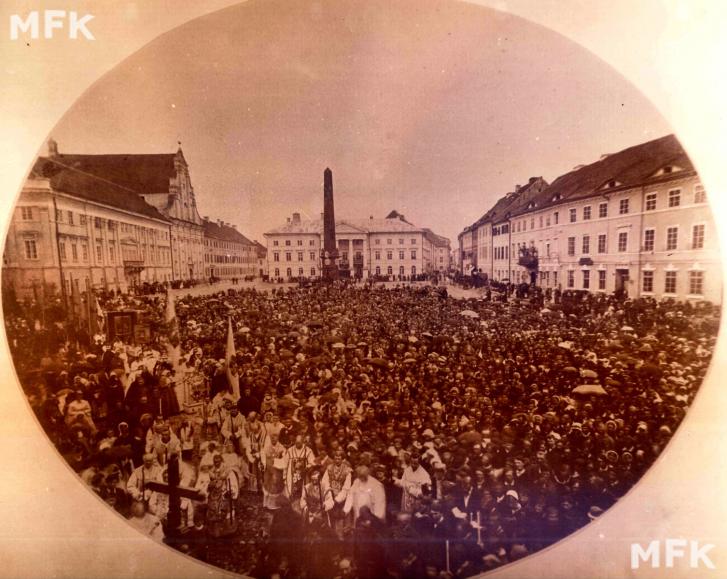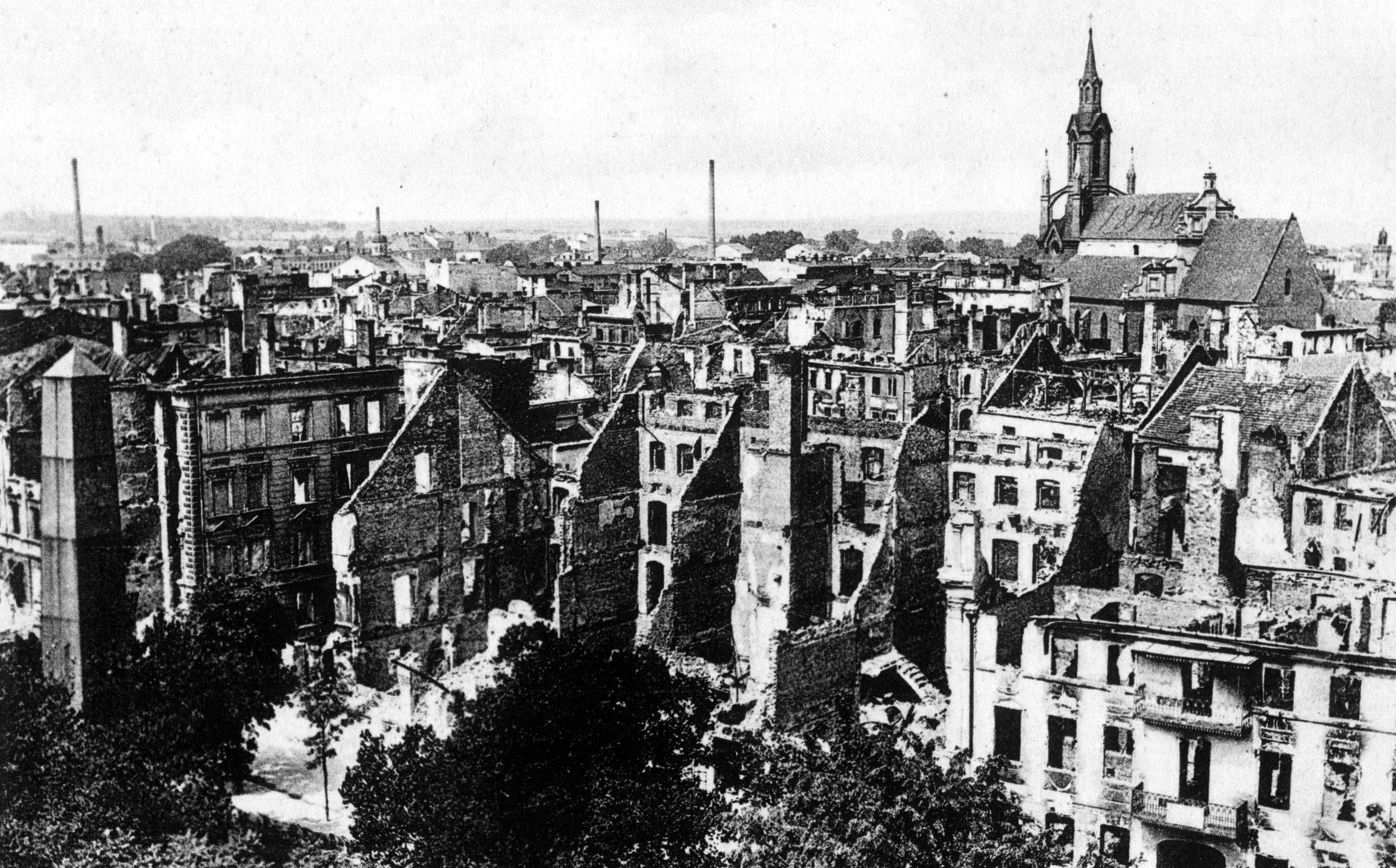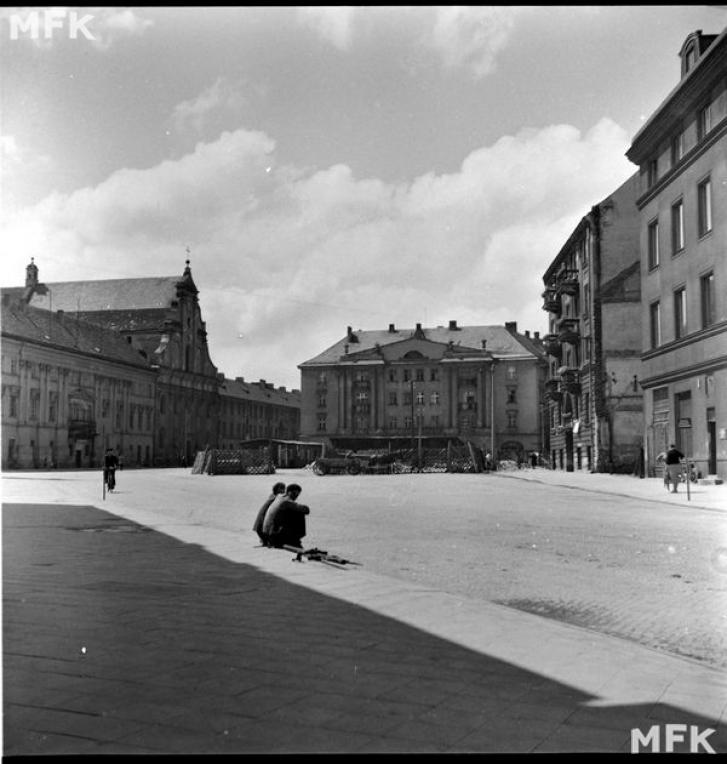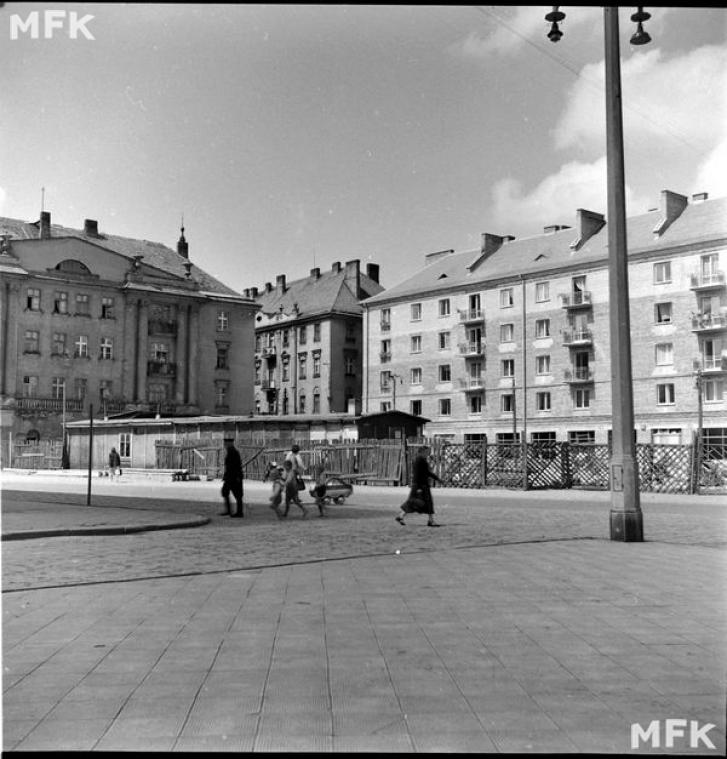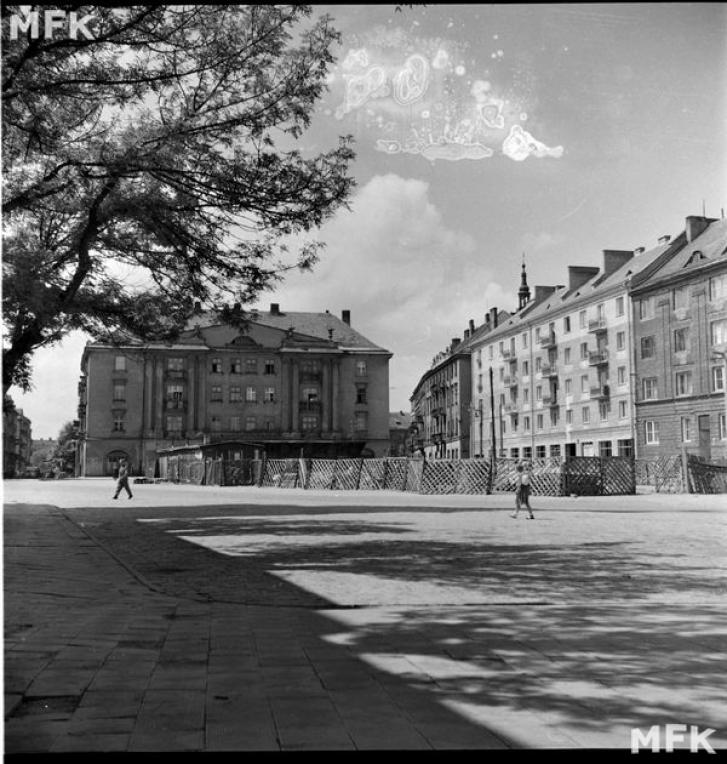
Historia Placu św. Józefa.
Znajduje się w północno-wschodniej części miasta lokacyjnego i stanowi – obok Głównego Rynku – najbardziej reprezentacyjny plac miejski. Łączy się z Placem św. Jana Pawła II, a prowadzą do niego trzy ulice: Kolegialna, Marjańska i A. Chodyńskiego.
Wytyczony został w 1818 r. po rozebraniu zabudowań mieszkalno-gospodarczych kanoników kaliskiej kapituły kolegiackiej, które uległy znacznym zniszczeniom podczas wielkiego pożaru miasta, który miał miejsce w 1792 roku.
Początkowo nosił nazwę Nowego Rynku, a obecną otrzymał w 1875 roku.
W 1841 r. po środku tego placu zbudowany został żeliwny pomnik, w kształcie wysokiej iglicy (według projektu Jana Gaya), upamiętniający dwukrotne spotkanie w Kaliszu króla pruskiego Fryderyka Wilhelma III z carami rosyjskimi – Aleksandrem I w 1813 r. i Mikołajem I w 1835 roku. W 1876 r. wokół tego pomnika urządzono skwer nazwany Skwerem Eugeniusza, na cześć księcia Leuchtenburskiego, członka rodziny carskiej i dowódcy pułku huzarów stacjonującego wówczas w mieście. Został on usunięty w 1928 roku. Osiem lat później – w 1936 r. – odsłonięto na nim pomnik ku czci żołnierzy 29 pułku Strzelców Kaniowskich poległych w wojnie polsko-bolszewickiej z lat 1919-1920, który zniszczyli okupanci hitlerowscy w latach II wojny światowej. Od 1967 r. znajdowała się tam fontanna, a obecnie stoi pomnik św. Jana Pawła II (według projektu Jana Kucza) upamiętniający pobyt Ojca Świętego w Kaliszu w 1997 r., wzniesiony w drugą rocznicę papieskiej wizytę.
Do najważniejszych obiektów znajdujących się przy tym Placu należy gotycki kościół kolegiacki pw. Wniebowzięcia Najświętszej Maryi Panny z barokową wieżą (obecnie bazylika mniejsza i Sanktuarium św. Józefa) oraz kompleks zabudowań pojezuickich wzniesionych pod koniec XVI w. i rozbudowanych w XVII w. (dzisiaj znajdują się w nim różne instytucje państwowe i samorządowe), a dawniej – w latach 1877-1926 – stała na jego skraju cerkiew prawosławna pw. śś. Piotra i Pawła.
Zabudowa mieszkalna stojąca wokół tego Placu została prawie całkowicie zniszczona na początku I wojny światowej, a obecną wzniesiono głównie w okresie międzywojennym.

It is situated in the north-east part of the town of the chartered town and constitutes, together with Główny Rynek [Main Market Square], the finest square in the town. It is joined with Jan Paweł II Square [John Paul the 2nd Square]. Three streets come to the square, namely Kolegialna, Marjańska and A. Chodyński ones.
The square came about in 1818 when residential and non-residential buildings owned by the canons of the Kalisz collegiate chapter house were dismantled. They needed to be removed since they were significantly damaged by the 1792 fire of the town.
At the beginning the square was called Nowy Rynek [New Market Square]. Its present name came into being in 1875.
In 1841 a cast-iron monument in the shape of a spire was erected in the middle of the square It was designed by Jan Gay to commemorate the fact that the Prussian king Frederick William III met two tsars of Russia in Kalisz; the tsar Alexander I in 1813 and the tsar Nicolas I in 1835.
In 1876 a square was set up around the monument called Skwer Eugieniusza [Eugene Square]. The name was given to honour the Duke of Leuchtenberg, the member of the tsar family and the commander of the hussar regiment that stationed in Kalisz. The monument was removed in 1928. Eight years later, in 1936, a monument was erected to honour the soldiers of the 29th Pułk Strzelców Kaniowskich [29 Kaniowski Gunner Regiment] who died in the Polish-Soviet War 1919-1921. The monument was destroyed by the Nazi at the time of the Second World War. Since 1967 there was a fountain in the square and then a monument dedicated to John Paul the 2nd designed by Jan Kucz. The monument was erected on the second anniversary of the papal visit to Kalisz to commemorate it.
There are some important buildings in the square. One of them is a gothic collegiate church under the invocation of the Assumption of the Holy Mary (now the Minor Basilica and the Sanctuary of Saint Joseph) with a baroque steeple We will also find there a complex of post-Jesuit buildings erected at the end of the 16th century and expanded in the 17th century. At present the buildings house numerous self-government and state institutions. In the years 1877-1926 an Orthodox church under the invocation of the Saint Peter and Paul stood at the edge of the square.
Tenement houses standing around the square were nearly completely destroyed at the beginning of the Great War; the present buildings are dated to the inter-war period.
Zdjęcia ze strony Wirtualnego Muzeum Fotografii Kalisza www.wmf.kalisz.pl
